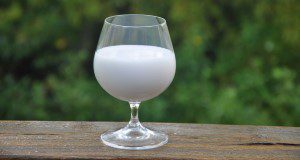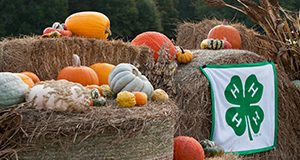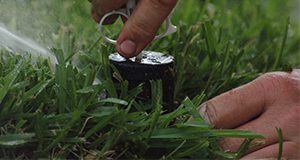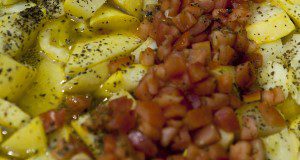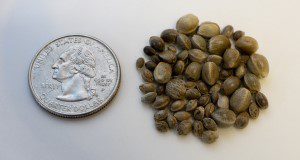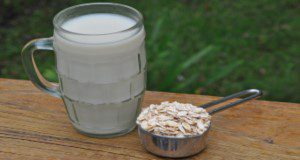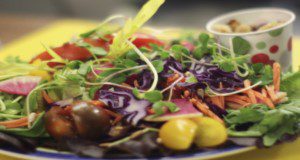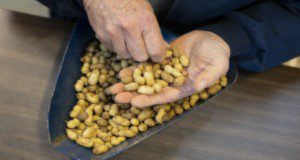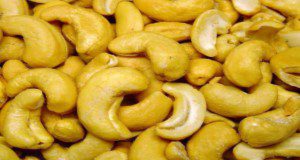This 3-page factsheet provides a brief overview of gender-affirming medical care, expenses, and funding options. A glossary with key terms discussed in this publication is included at the end. Written by Chloe W. Swearingen, Megan Donovan, Jorge Ruiz-Menjivar, and Sarah M. Ellis, and published by the UF/IFAS Department of Family, Youth and Community Sciences, November 2020.
https://edis.ifas.ufl.edu/fy1492
Category: Families & Consumers
Leches a base de plantas: Coco
La leche de coco es una de las muchas variedades de alternativas vegetales a la leche de vaca. Los factores que pueden llevar a los consumidores hacia alternativas a la leche no láctea incluyen la adherencia a una dieta vegana, la intolerancia a la lactosa, la alergia a la leche de vaca o simplemente la preferencia. El propósito de esta guía es informarle sobre el contenido de nutrientes de la leche de coco y sus posibles beneficios y riesgos para la salud.
This new 4-page article is the Spanish language version of FSHN20-49/FS411, Plant-Based Milks: Coconut, written by Celia Andreo, Daniela Rivero-Mendoza, and Wendy J Dahl, and published by the UF/IFAS Food Science and Human Nutrition Department.
https://edis.ifas.ufl.edu/fs421
Tax Relief in Disaster Situations
This 1-page document provides general information regarding disaster assistance and links to online resources for taxpayers affected by a federally declared disaster. Written by Jorge Ruiz-Menjivar and Heidi Copeland, and published by the UF/IFAS Department of Family, Youth and Community Sciences, revised September 2020.
https://edis.ifas.ufl.edu/fm259
Understanding Extension for School-Based Agricultural Education #3: FFA and 4-H—A Comparison
Even though many recognize FFA and 4-H, there is still a big disconnect in understanding the similarities and differences between them. This 4-page document serves as an educational tool for school-based agricultural education and 4-H programs, and provides a background of the history, characteristics, and membership process of these long-standing organizations. Written by Debra Barry, Alyssa Shepherd, Jennifer Patton, and Stephen Gran, and published by the UF/IFAS Department of Agricultural Education and Communication, September 2020.
https://edis.ifas.ufl.edu/wc371
Florida H2OSAV Insights: Home Water Use in the Gainesville Regional Utilities (GRU) Service Territory
This 6-page fact sheet discusses basics about water consumption for single-family, detached homes served by Gainesville Regional Utilities, information about the highest water users, and impacts of irrigation on water consumption. Written by Nick Taylor, Kaitlin Olander Robb Price, Bradley Spatz, Tricia Kyzar, and Pierce Jones, and published by the UF/IFAS Department of Agricultural and Biological Engineering, September 2020.
https://edis.ifas.ufl.edu/ae544
Nutricion para la salud y el estado fisico: azucar y otros edulcorantes
Esta publicación proporciona información sobre azúcares y otros edulcorantes en la dieta estadounidense. La publicación describe fuentes ocultas de azúcares agregados en los alimentos para ayudar a aquellos que desean reducir la ingesta de azúcar, a encontrar los azúcares agregados en sus dietas. La sección sobre edulcorantes de alta intensidad analiza las características de cada edulcorante aprobado.
This is the Spanish translation of FSHN20-46/FS406, Nutrition for Health and Fitness: Sugar and Other Sweeteners. Written by Wendy Dahl and Linda Bobroff, translated by Daniela Rivero-Mendoza, and published by the UF/IFAS Food Science and Human Nutrition Department.
https://edis.ifas.ufl.edu/fs407
The Mediterranean Lifestyle: The Power of Food
The Mediterranean diet dates back to the early 1960s, in which the population living among the Mediterranean basin, much of Greece and Southern Italy consumed high amounts of fruits, vegetables, nuts, legumes, and unprocessed cereals with minimal consumption of meat. This dietary pattern has been shown to improve heart health, maintain weight, and reduce the risk for chronic diseases such as cardiovascular disease and type 2 diabetes. This new 6-page publication discusses the Mediterranean dietary pattern and provides tips to incorporate this lifestyle into daily life, as well as sample recipes. Written by Charissa Lim, Alexa Hosey, Farah Tadros, Madison Woodard, and Jeanette Andrade, and published by the UF/IFAS Food Science and Human Nutrition Department.
https://edis.ifas.ufl.edu/fs399
Plant-Based Milks: Hemp
Hemp milk is a plant-based milk growing in popularity. Commercial hemp seed, used in the production of hemp milk, contains only trace amounts of the compound tetrahydrocannabinol (THC), much too low to produce any psychoactive effects from consuming the milk. This new 4-page publication describes the composition of hemp milk and the potential health benefits and risks. Written by Sarah Curl, Daniela Rivero-Mendoza, and Wendy J. Dahl, and published by the UF/IFAS Food Science and Human Nutrition Department.
https://edis.ifas.ufl.edu/fs420
Leading Difficult Conversations Series #1: Introduction
This publication series examines strategies and tactics for leaders to utilize when tasked with having a difficult conversation. Leadership can require leaders to have necessary conversations that are not always easy. Through providing leaders with specific tools to have difficult conversations, this series aims to promote dialogue and equip individuals to be more successful leaders. The series provides information regarding preparing for difficult conversations, creating a safe conversation environment, utilizing conversation tactics, and employing listening skills. This new 2-page publication of the UF/IFAS Department of Agricultural Education and Communication is part 1 of the series. Written by Christy Chiarelli.
https://edis.ifas.ufl.edu/wc374
Goji Berry: a Novel Nutraceutical “Superfruit” for Florida Master Gardeners
Goji berries have been used in both fresh and processed forms for food and medicine for more than 4,000 years in China. The goji berry fruit is known as a “superfruit” thanks to its high levels of vitamins and minerals, as well as other medicinal benefits recognized in many countries around the world. Most of Florida’s climate is favorable for goji berry, and a few Florida growers have cultivated it for years. This species can tolerate infertile and unfavorable growth conditions, and the prominent health benefits of this crop may be highly profitable for Florida growers. The objective of this new 7-page article is to provide a general overview of how the goji berry can be grown in Florida. Written by Yujie Jiao and Guodong Liu, and published by the UF/IFAS Horticultural Sciences Department.
https://edis.ifas.ufl.edu/hs1391
Plant-Based Milks: Oat
Oat milk is one of the more recent dairy alternatives to hit the grocery shelves, and several brands are currently available in the United States. Oat milk is made from the cereal grain oats. This new 3-page publication of the UF/IFAS Food Science and Human Nutrition Department describes how oat milk is made, its ingredients and nutrient profile, and the potential health benefits and risks of consumption. Written by Hannah Cooper, Daniela Rivero-Mendoza, and Wendy J. Dahl.
https://edis.ifas.ufl.edu/fs419
Leches a base de plantas: Nuez de marañón (anacardo)
La disponibilidad y el consumo de alternativas de leche a base de plantas, también conocidas como no lácteas, han ido en aumento. Las ventas de alternativas a la leche no láctea se han más que duplicado, mientras que el consumo de leche de vaca tradicional ha disminuido. Este aumento puede deberse a que las leches de origen vegetal se perciben como “naturales”, así como a un aumento del veganismo y la búsqueda de evitar la lactosa. Las principales alternativas de leche de origen vegetal son la almendra, la soja, el coco, la nuez de marañón (anacardo) y el arroz. Esta publicación analiza el contenido nutricional, los posibles beneficios para la salud y los posibles riesgos de la leche de nuez de marañón.
This new 4-page article is the Spanish translation of FSHN20-51/FS413, Plant-Based Milks: Cashew, written by Jamie Zeldman, Daniela Rivero-Mendoza, and Wendy J. Dahl, translated by Daniela Rivero-Mendoza, and published by the UF/IFAS Food Science and Human Nutrition Department.
https://edis.ifas.ufl.edu/fs418
Don’t Fake It, Make It! Best Practices for Attending Virtual Events
Continuing the Don’t Fake It, Make It! series to make the most out of virtual conferences and meetings, this fact sheet provides tips specific to attendees. Up to this point, the series has focused largely on the process a host should go through before launching a virtual event. This new 4-page publication of the UF/IFAS Department of Agricultural Education and Communication shifts the focus from virtual host to virtual participant to allow attendees of the virtual event to get the most out of the experience. While the spotlight is on attending virtual conferences in particular, the suggestions included can translate to other virtual meeting spaces. Written by Jarred A. Shellhouse and Lauri M. Baker.
https://edis.ifas.ufl.edu/wc373
Dietas populares: Ayuno intermitente
La pérdida de peso puede ser un desafío. Comenzar una dieta restrictiva puede ser agotador emocionalmente y difícil de cumplir. ¿Hay alguna forma más efectiva de perder peso? ¿El momento y la frecuencia de las comidas ayudan a perder peso? Esta publicación describe los beneficios y riesgos del ayuno intermitente para bajar de peso.
This new 4-page article is the Spanish language translation of FSHN20-47/FS409, Popular Diets: Intermittent Fasting, written by Michelle Yavelow, Daniela Rivero-Mendoza, and Wendy Dahl, translated by Daniela Rivero-Mendoza, and published by the UF/IFAS Food Science and Human Nutrition Department.
https://edis.ifas.ufl.edu/fs417
Dietas populares: Alimentos crudos
La dieta de alimentos crudos tiene sus raíces en un movimiento vegetariano que se remonta a los años 1800. Como su nombre lo indica, una dieta de alimentos crudos es un patrón dietético compuesto mayoritaria o completamente por alimentos crudos y sin procesar. Esta publicación explora los posibles beneficios y riesgos para la salud de una dieta de alimentos crudos.
This is the Spanish translation of FSHN20-45/FS404, Popular Diets: Raw Foods, written by Alexa Barad, Daniela Rivero-Mendoza, and Wendy Dahl, translated by Daniela Rivero-Mendoza, and published by the UF/IFAS Food Science and Human Nutrition Department.
https://edis.ifas.ufl.edu/fs415
Pérdida de peso y los adultos mayores: Riesgos y beneficios
A los adultos obesos a menudo se les aconseja perder peso para reducir el riesgo de enfermedades crónicas. Sin embargo, los beneficios para la salud de la pérdida de peso cambian a medida que envejecemos. Esta publicación analiza los riesgos y beneficios de la pérdida de peso planificada y no planificada para adultos mayores.
This is the Spanish translation of FSHN20-42/FS401, Weight Loss and the Older Adult: Risks and Benefits, written by Wendy Gans, Rachelle Savelle, Nancy Gal, and Wendy Dahl, translated by Daniela Rivero-Mendoza, and published by the UF/IFAS Food Science and Human Nutrition Department.
https://edis.ifas.ufl.edu/fs414
Reducing Your Risk for Type 2 Diabetes: The Power of Food
Type 2 diabetes is a medical condition where you have too much sugar in your blood. According to the Centers for Disease Control, nearly 1 in 10 adults have Type 2 diabetes and 1 in 3 adults have pre-diabetes. This new 14-page publication of the UF/IFAS Food Science and Human Nutrition Department describes the modifiable risk factors for type 2 diabetes and tips to reduce your risk for diabetes. It also includes several example recipes. Written by Elena Torna, Jodi Fitzgerald, Danielle Nelson, Madison Woodard, and Jeanette Andrade.
https://edis.ifas.ufl.edu/fs397
Dietas populares: Dieta cetogénica
La dieta cetogénica es una dieta alta en grasas y muy baja en carbohidratos. El primer uso documentado de la dieta cetogénica fue en 1921 para tratar la epilepsia en niños. En los últimos años, la dieta cetogénica ha ganado un resurgimiento como un medio potencial para perder peso. La dieta cetogénica se ha vuelto popular debido al respaldo de las celebridades y las influencias de las redes sociales, pero ¿es segura y efectiva?
This new 4-page article is the Spanish translation of FSHN20-44/FS403, Popular Diets: Ketogenic Diet. Written by Kelsey Gemmill, Daniela Rivero-Mendoza, and Wendy Dahl, and published by the UF/IFAS Food Science and Human Nutrition Department.
https://edis.ifas.ufl.edu/fs416
Plant-Based Milks: Cashew
The availability and consumption of plant-based milk alternatives have been on the rise. Sales of nondairy milk alternatives have more than doubled, whereas consumption of traditional cow’s milk has dropped. This increase may be due to plant-based milks being perceived as “natural,” as well as a rise in veganism and avoidance of lactose. The primary plant-based dairy alternatives are almond, soy, coconut, cashew and rice. This new 4-page publication of the UF/IFAS Food Science and Human Nutrition Department discusses the nutritional content, potential health benefits, and potential risks of cashew milk. Written by Jamie Zeldman, Daniela Rivero-Medoza, and Wendy J. Dahl.
https://edis.ifas.ufl.edu/fs413
Plant-Based Milks: Coconut
Plant-based alternatives to cow’s milk have become a rising trend. Factors that may steer consumers toward nondairy milk alternatives include adherence to a vegan diet, lactose intolerance, allergy to cow’s milk, or simply preference. Coconut milk is one of the many varieties of plant-based milk. Whether you are considered switching to or have already begun purchasing a plant-based milk, the purpose of this new 4-page guide is to inform you on the nutrient content of coconut milk and its potential health benefits and risks. Written by Celia Andreo, Daniela Rivero-Mendoza, and Wendy J. Dahl, and published by the UF/IFAS Food Science and Human Nutrition Department.
https://edis.ifas.ufl.edu/fs411

